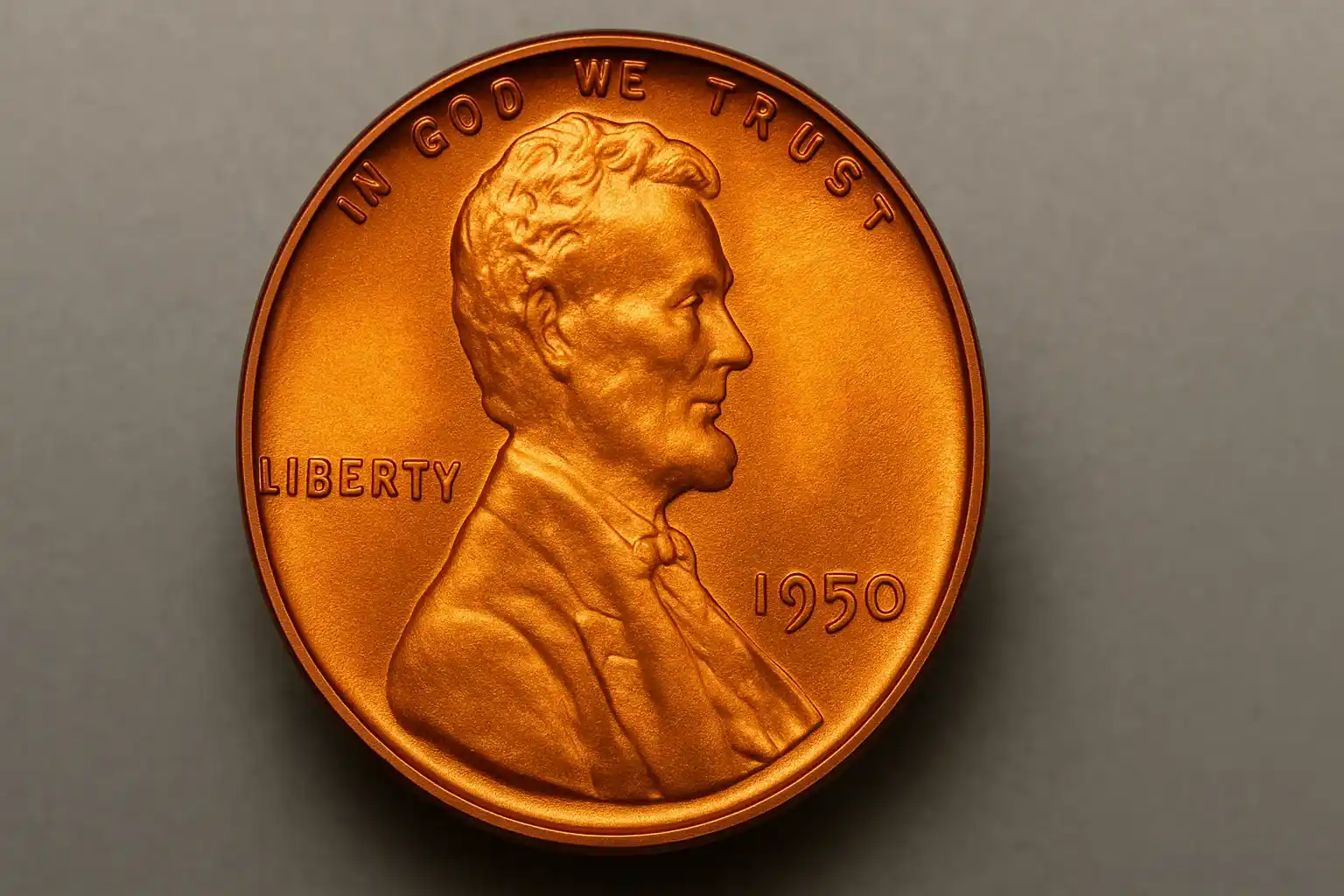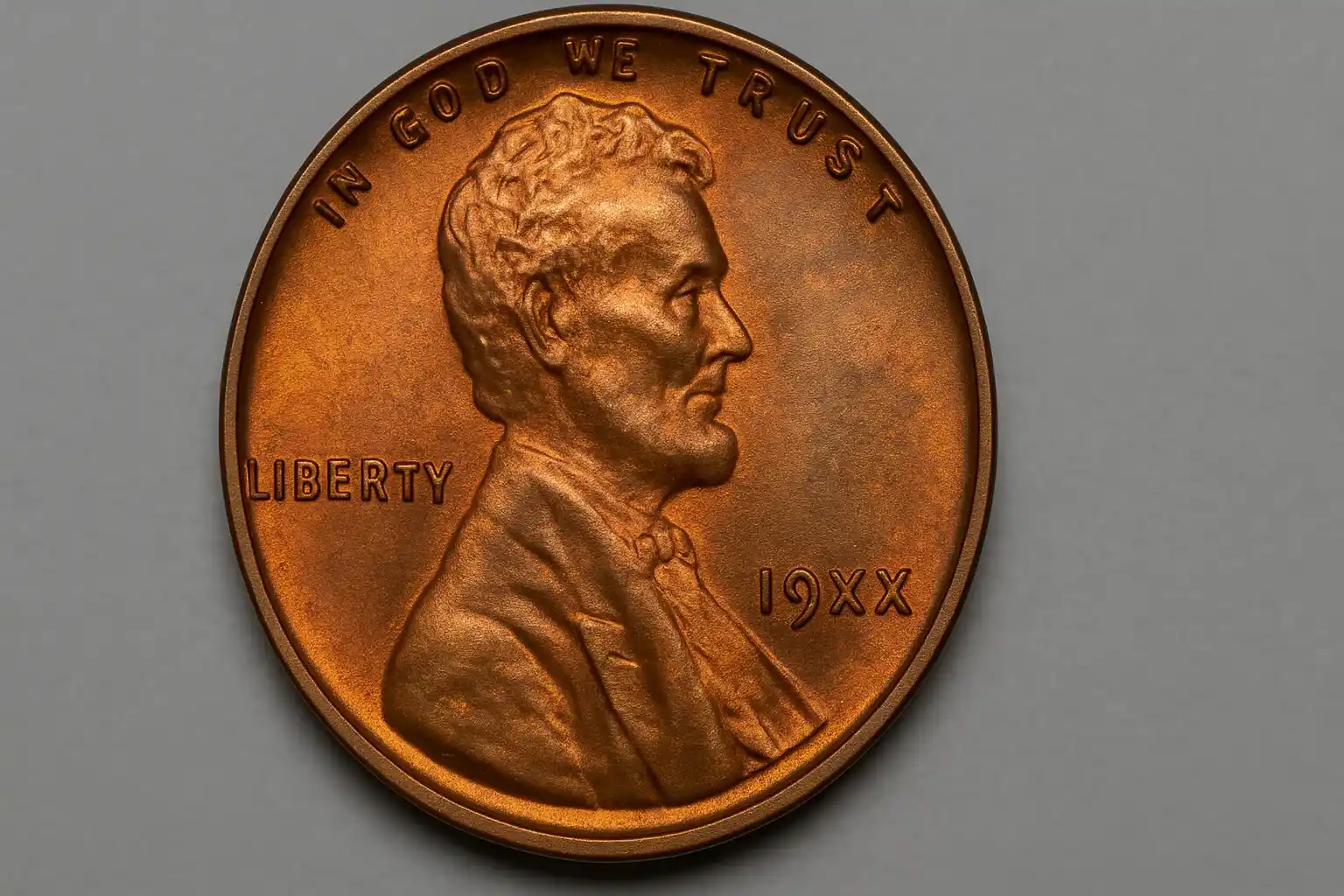Red, Red-Brown, or Brown? What Penny Colors Mean for Collectors
Pennies do not all look the same, and their color is one of the most important things collectors study. A brand-new copper cent shows off a fiery orange-red surface, the fresh glow of metal that has not yet been touched by time.
Coins in this state are rare once they leave the mint, and graders use the term Red Cent for pieces that keep nearly all of this original brilliance.
As months and years pass, copper interacts with air and moisture, and that sharp red luster begins to soften. The result is a mixture of reddish and chocolate shades, a stage collectors describe as Red-Brown. This is the most common appearance of pennies that have been handled or stored in average conditions.
With more age, nearly every copper cent darkens to a full Brown, losing nearly all traces of red. These pieces may appear chocolate-colored, tan, or even deep coffee-brown, and this is how most older Wheat and Indian Head cents are found today. One major exception came in 1943, when the U.S. Mint struck cents from zinc-coated steel to save copper for the war effort. Those coins started out with a silvery steel-gray surface but often corroded quickly.
Modern cents, struck from copper-plated zinc since 1982, often begin with a reddish tone similar to older coins, but as the plating thins or wears, gray zinc patches can appear on the surface. Over decades, storage conditions can produce unusual effects: rainbow toning across the surface, green spots of verdigris, or blackened areas from contact with sulfur or moisture.
These color changes are not just cosmetic. In numismatics, the official designations of Red, Red-Brown, and Brown directly influence value, since brightness and originality are prized.
RD Designation

Red pennies, or RD-designated cents, are considered the most desirable form of copper coinage because they retain nearly all of their original mint brilliance. To qualify, a coin must display at least 85% of its fresh orange-red surface color, the hue of newly struck copper. Professional grading services such as PCGS and NGC strictly apply this standard, and coins that meet it consistently command premiums in the marketplace.
When you examine a Red penny, several features stand out:
Color and Shine: A vibrant orange-red tone dominates the surfaces, free from heavy darkening or discoloration.
Luster: A sharp cartwheel effect appears when the coin is tilted under light, showing full mint glow.
Surface Quality: Minimal oxidation, clean fields, and crisp details in the lettering and rims distinguish a Red penny from other designations.
Collectors value these coins not only for their beauty but also for their scarcity. Copper is highly reactive, and its color fades quickly under normal storage or handling conditions. Because of this, older Red pennies are rare, especially those from the early Wheat cent or Indian Head cent eras. Their premiums reflect this rarity:
Early Dates: Coins from the 1910s or 1920s in RD are far scarcer than their Brown equivalents.
Market Premiums: Red coins consistently sell for multiples of Brown or Red-Brown coins in the same grade.
Registry Demand: Collectors competing in registry sets often chase the finest Red examples, pushing values even higher.
Preservation is critical, since even minor environmental exposure can cause a Red coin to lose its status. Collectors must take careful steps to maintain the original surfaces:
Storage: Use airtight holders or slabs to minimize contact with air.
Climate Control: Keep coins in cool, dry conditions, ideally with silica packs to absorb moisture.
Handling: Avoid touching surfaces directly, since skin oils accelerate toning.
RB Designation
Red-Brown pennies, or RB-designated cents, occupy the middle ground between fresh Red coins and fully aged Brown pieces. These coins retain between 25% and 75% of their original mint red color, with the rest of the surface showing natural brown toning from oxidation. For collectors, Red-Brown coins often represent a balance: more affordable than full Red examples but still far more attractive than completely Brown coins.
The appearance of a Red-Brown penny is distinctive. You’ll notice areas of both original brilliance and toned surfaces, blending into a coin that has character but still flashes its youthful glow. Specific traits include:
Color Mix: Patches of orange-red luster remain, usually in the fields or protected areas, while exposed high points have toned to brown.
Visual Contrast: Coins often show a two-tone effect—bright red around letters and devices, chocolate brown across the open fields.
Luster: Some cartwheel effect remains, though it is less sharp than on Red coins.

In terms of market value, RB coins are positioned between the extremes:
Premium Over Brown: They sell for noticeably more than fully Brown coins of the same grade.
Discount to Red: They are always priced below true Red coins, sometimes significantly, especially in higher Mint State grades.
Collector Accessibility: Many collectors choose RB coins because they offer strong eye appeal without the steep price tag of Red examples.
Preservation plays a role in whether a coin stays RB or continues to darken toward Brown. Collectors need to follow best practices:
Storage Conditions: Keep coins in slabs, capsules, or airtight holders to minimize exposure.
Environmental Control: Avoid humid or unstable climates, which accelerate toning.
Long-Term Outlook: Over decades, many RB coins will slowly darken, meaning today’s RB may become tomorrow’s Brown.
The appeal of Red-Brown pennies is that they still show a strong link to the coin’s original mint brilliance while also bearing the marks of age. For Wheat and Indian Head cents, RB coins are often the most practical and visually pleasing choice. Collectors who cannot secure high-grade Reds often settle for RB coins, which remain vibrant enough to stand out in any collection.
BN Designation
Brown pennies, or BN-designated cents, represent the natural end stage of copper coinage. When less than 25% of the original mint red color remains, a coin is officially graded as Brown. Over time, copper reacts with oxygen, moisture, and environmental elements, causing its surface to oxidize. What emerges is a cent with rich chocolate, mahogany, or even dark coffee-colored tones. While these coins no longer show the fiery glow of their Red counterparts, they carry a sense of age and history that many collectors appreciate.
The appearance of a Brown penny depends on its storage and the amount of circulation it endured. Distinguishing features include:
Color Range: Shades span from light tan to deep chocolate brown, sometimes with subtle purple, blue, or olive overtones.
Surface Texture: Luster is usually muted, though some uncirculated Brown coins retain traces of original cartwheel shine.
Eye Appeal: In higher grades, attractive toning can enhance desirability; in lower grades, surfaces may look dull or lifeless.
From a market perspective, Brown coins are generally the most affordable option:
Lowest Premiums: They command smaller prices than both Red-Brown and Red examples of the same grade.
Accessibility: Collectors on a budget often choose Brown coins to complete sets, especially in early Lincoln Wheat or Indian Head series.
Exceptions: Rare dates in Brown condition can still be valuable, and beautifully toned pieces with unusual hues may bring premiums.
Proper storage can help preserve the color and prevent further degradation:
Stable Environments: Cool, dry conditions slow down the toning process.
Avoid Harsh Cleaning: Cleaning damages surfaces and destroys value, especially for already darkened coins.
Holder Choice: Encapsulation in slabs or airtight holders helps maintain surfaces for decades.
Many 19th- and early 20th-century cents survive only in Brown condition, and these coins often tell stories of long circulation and survival through time. Brown coins can be both affordable and historically rich.
Red vs. Red-Brown vs. Brown Pennies
The color of a copper cent is a defining factor in how the coin is graded, valued, and preserved. For collectors and investors alike, understanding these distinctions is essential.
Designation | Definition | Visual Appearance | Market Impact |
Red (RD) | At least 85% original mint red remains | Bright orange-red, full cartwheel luster, minimal toning | Highest premiums, rare in older coins, most desirable |
Red-Brown (RB) | 25–75% original mint red remains | Mix of red and chocolate tones, two-tone effect, partial luster | Mid-range premiums, balance between affordability and appeal |
Brown (BN) | Less than 25% original mint red remains | Chocolate to deep brown, muted luster, sometimes colorful toning | Most affordable, common in older issues, valued for history |
In short, the progression from Red to Red-Brown to Brown reflects the life cycle of copper coinage. Collectors prize Red for its rarity, appreciate Red-Brown for its compromise of beauty and cost, and value Brown for its authenticity and accessibility.
